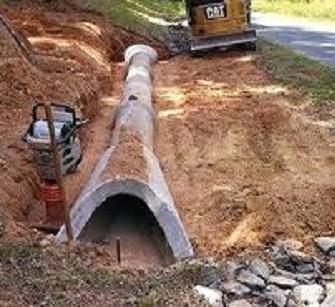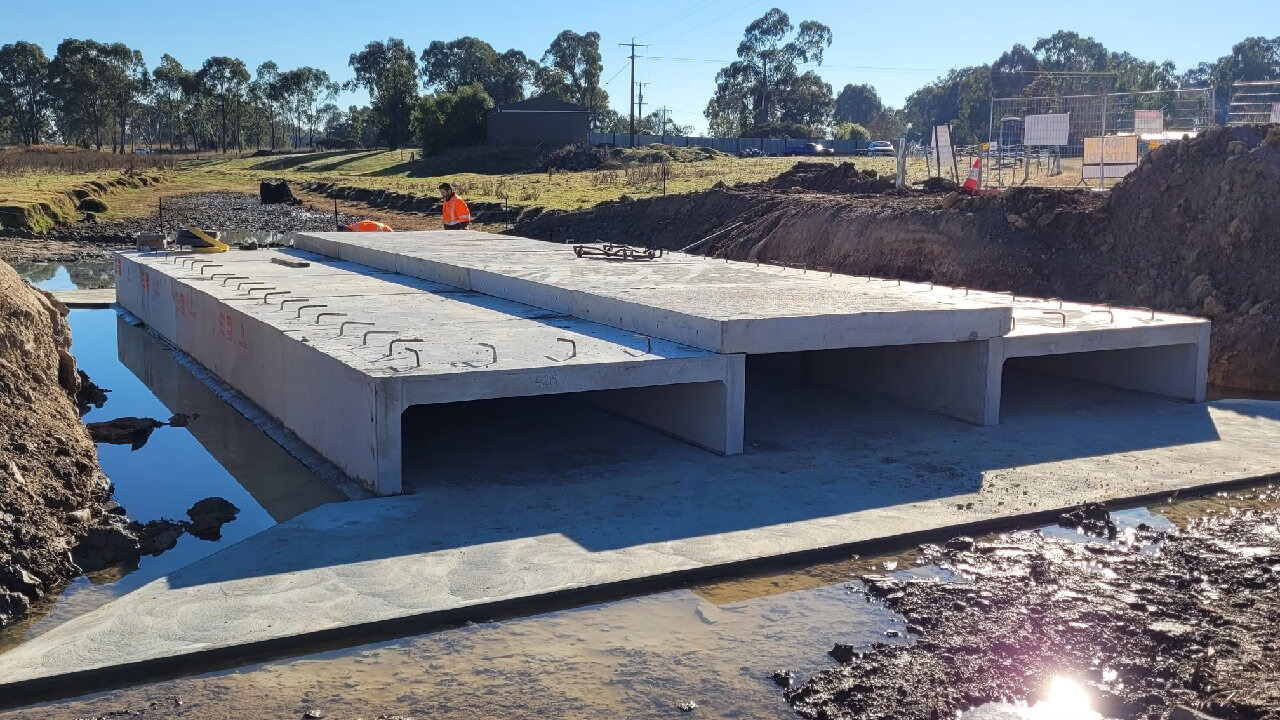Culvert Installment Made Easy: Step-by-Step Overview for Success
Mounting culverts might appear like a straightforward task, but guaranteeing a successful outcome requires careful planning and execution. From picking the suitable culvert dimension to integrating correct drainage procedures, each step in the installment procedure plays an essential function in the functionality and longevity of the culvert system. By complying with a methodical approach and focusing on vital information, the installment can continue smoothly, lessening possible concerns down the line. Remain tuned to discover the crucial actions and considerations that can make culvert setup a smooth and successful venture.
Selecting the Right Culvert Size
Choosing the proper culvert size is important for ensuring efficient water circulation and structural honesty in culvert setup tasks - Pad Construction. The size of the culvert straight influences the circulation ability of water through the framework. A culvert that is also small can cause flooding and overflow, while one that is also huge might lead to lowered water speed, potentially creating sediment buildup and obstructions
To figure out the appropriate culvert size, elements such as the watershed area, top flow rates, and hydraulic efficiency need to be carefully considered. Estimations based on these parameters assist in selecting a dimension that can sufficiently take care of the predicted water volume while minimizing the risk of clogs and architectural failure.
It is necessary to seek advice from engineering standards and criteria to ensure that the picked culvert size meets the job requirements and local regulations (Pad Construction). By selecting the appropriate culvert dimension, task supervisors can optimize water flow, stop prospective issues, and boost the total effectiveness and durability of the culvert installation
Preparing the Installment Website
Efficient culvert setup necessitates thorough prep work of the installation site to guarantee optimal architectural assistance and performance. Prior to starting the setup process, it is essential to clear the site of any debris, plant life, or blockages that could impede the culvert's placement.
Additionally, it is essential to take into consideration variables such as dirt composition, groundwater degrees, and environmental effects when preparing the installation site. Performing a detailed site evaluation can aid determine any type of possible obstacles or risks that might influence the culvert's efficiency. By putting in the time to prepare the installment website properly, you can help ensure a successful culvert setup that satisfies structural demands and guarantees long-lasting capability.
Placing the Culvert Appropriately

The grade at which the culvert is put is crucial for maintaining a correct slope for water circulation. A progressive incline aids avoid pooling and advertises effective drainage. In addition, the culvert must be oriented appropriately to make sure that the inlet and outlet are in the correct places. This orientation is important for the culvert to work properly in managing water circulation.
Backfilling and Condensing the Dirt
Correct backfilling and compaction of the dirt around the culvert is necessary to make sure stability and stop potential issues in the future. Once the culvert is appropriately placed, the following vital action is to backfill the location around it with ideal Pad Construction product. The backfill material should be cost-free from rocks, debris, and natural issue to prevent damages to the culvert. It is suggested to make use of granular material such as sand or gravel for backfilling, as it supplies good water drainage and compaction homes.
After placing the backfill product, it is important to portable it in layers of consistent density. Using a compactor or a mechanical tamper, small the soil gently to avoid damaging the culvert. Compaction aids in lowering the opportunities of negotiation and makes sure uniform support around the culvert. It is important to small the soil evenly on all sides of the culvert to maintain its architectural integrity.
Correct backfilling and compaction not only give stability to the culvert but additionally assist in preventing dirt disintegration and keeping the durability of the culvert system.
Ensuring Proper Drainage Assimilation
Integrating effective drain remedies plays an important role in the general capability and durability of culvert installations. Appropriate drainage assimilation is important for taking care of water flow, stopping erosion, and ensuring the structural integrity of the culvert system. To accomplish this, it is crucial to create a thorough drainage plan that takes into consideration factors such as the volume of water anticipated, the topography of the location, and the kind of dirt present.

Furthermore, including attributes like disintegration control procedures, such as riprap or plants, can better improve the performance of the drainage system. By meticulously preparing and implementing these drain remedies, culvert installments can work successfully and stand up to the test of time.
Verdict
Finally, appropriate culvert setup is critical for preserving effective water drainage systems. By choosing the ideal culvert dimension, preparing the installation website, placing the culvert correctly, backfilling and condensing the soil, and ensuring appropriate drainage assimilation, success can be attained. Complying with these actions will assist guarantee the long life and performance of the culvert, inevitably adding to the general success of the drain system.